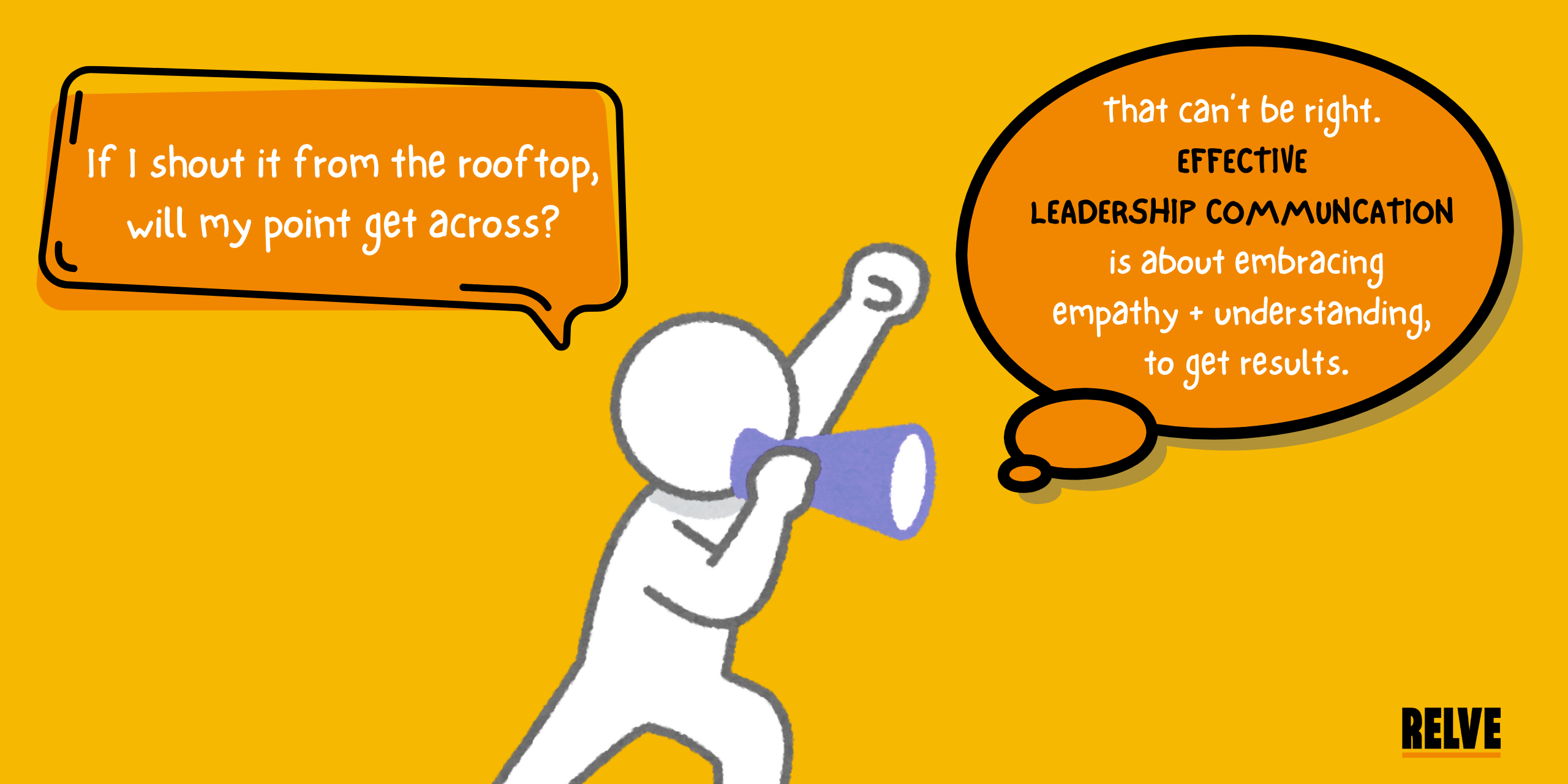Most leaders are great at talking. Meetings, updates, and pep talks can go on for hours. But here’s the plot twist: talking isn’t the same as communicating. Have you ever left a meeting thinking, “Wait, what are we supposed to do again?” That’s the real problem. Leadership communication can be a little oops. It can cost you trust, time, and talent.
That’s why we are bringing this blog to you. In the next few scrolls, you’ll learn what leadership communication actually means, why it matters more than your LinkedIn headline, the styles and strategies that separate leaders from others and how to fix common mistakes that leaders (yep, even you) make. Let’s make you someone your team actually wants to listen to and follow.
What is Leadership Communication?
Leadership communication is how leaders talk to people in a way that moves things forward.
It’s not just about giving directions. It’s about inspiring, aligning teams, solving problems, and keeping people from panic-Googling “how to work under a terrible boss.”
Effective leadership communication connects facts, emotions, and actions.” In other words, it’s how leaders say the right thing, in the right tone, at the right time to get the right results.
You’re not just speaking. You’re leading while you speak. That’s the difference.
Why Is Communication Important in Leadership?
You could be the smartest person in the building. But if you can’t explain what’s in your brain? You’re basically just a locked safe full of instructions no one can read.
Communication in leadership is what turns ideas into action. It aligns people and builds trust. It reduces confusion and drama. And trust us, less drama is always good for business.
According to McKinsey, by using communication and collaboration through social technologies, companies can raise the productivity of knowledge workers by 25%.
According to Grammarly Business, 72% of business leaders say effective communication in leadership has directly increased their team’s productivity.
So the question isn’t why communication matters in leadership. It’s: How have you not mastered this already?
Core Components of Effective Leadership Communication
🧠 Quick Quiz
“We’re strategically aligning cross-functional opportunities to achieve synergy.” What happens next?
Want to know the leadership communication skills and traits that make leaders successful? Here’s what to focus on:
1. Clarity
Say it clearly. Say it once. No riddles. No fluff. If your message requires a decoder ring, it’s a failure.
2. Confidence
Even if you’re slightly nervous, speak like you mean it. People don’t follow question marks. They follow bold statements (backed by action).
3. Emotional Intelligence
Understand your team. Read the room. Don’t deliver budget cuts like you’re announcing free pizza.
4. Active Listening
Great leaders don’t just talk. They listen. And they show they care about what they hear. (That’s why empathy and engagement often go hand in hand.)
5. Consistency
Trust is built through repetition. Don’t be mysterious. Don’t change your message every Monday. It’s not a plot twist. It’s a business.
Common Communication Styles in Leadership
Not all leaders speak the same way. And that’s okay — unless your style is ‘vague confusion’ or ‘long-winded rambler.’ Here are a few communication styles in leadership to understand:
- Directive: Clear, to the point. Great in crisis. It can feel cold if overused.
- Collaborative: Open-ended. Asks questions. Encourages feedback.
- Coaching: Helps people grow. Focuses on development. Needs patience.
Visionary: Inspires through storytelling. Helps teams see the big picture.
Leadership Communication Strategies That Actually Work
These aren’t fluffy tips. These are leadership communication strategies used by people who get stuff done:
1. Simplify Complex Ideas
If your idea can’t be explained in 30 seconds, it’s not ready. Use metaphors, analogies and use memes if you have to.
2. Use Multiple Channels
Your team doesn’t all read emails. Use Slack, meetings, town halls, videos – whatever works.
3. Ask for Feedback (and Mean It)
Create a culture where people can speak up without fear. Then listen. Otherwise, you’re not leading, you’re monologuing.
4. Reinforce the Message
Say it. Repeat it. Post it. Build a culture where core ideas are echoed in every meeting.
5. Lead by Example
Your tone sets the tone. Want transparency? Be transparent. Want clarity? Stop using 78-slide decks to explain simple updates.
How to Develop Leadership Communication Skills
No one’s born a great communicator. You have to build it, train it and you sometimes cringe at your own voice recordings too. Here’s how to do it:
Leadership Communication Checklist
Communication Challenges Leaders Face & How to Overcome Them
Let’s get honest. Even the best communicators face issues. Here are a few and how to fix them:
| Challenges | Why | How to Overcome |
| Team Misunderstands You | Too much jargon or over-explaining. | Use simple language. Ask them to repeat what they understood. |
| People Aren’t Speaking Up | Fear, past experiences, unclear expectations. | Build psychological safety. Reinforce that all feedback is welcome. |
| Remote Team? No One’s Aligned | Poor digital habits | Use async tools. Use summaries. Use emojis to clarify the tone. |
| You Talk Too Much | You think talking = leading | Pause, ask questions and sometimes quietly listen. |
Need help staying grounded through it all? This piece on personal accountability and workplace happiness is a gem.
Conclusion
So, let’s wrap this up like a boss who knows how to speak clearly. Leadership communication isn’t optional. It’s not nice to have and not just a “soft skill.” It’s the thing that makes your team trust you, follow you, and not quit on you during a company-wide Zoom. Also, do your personal development at the workplace.
When you speak clearly, with empathy and intention, your team believes you. They align, move and grow.
So, the next time you speak to your team, don’t just talk. Lead.
